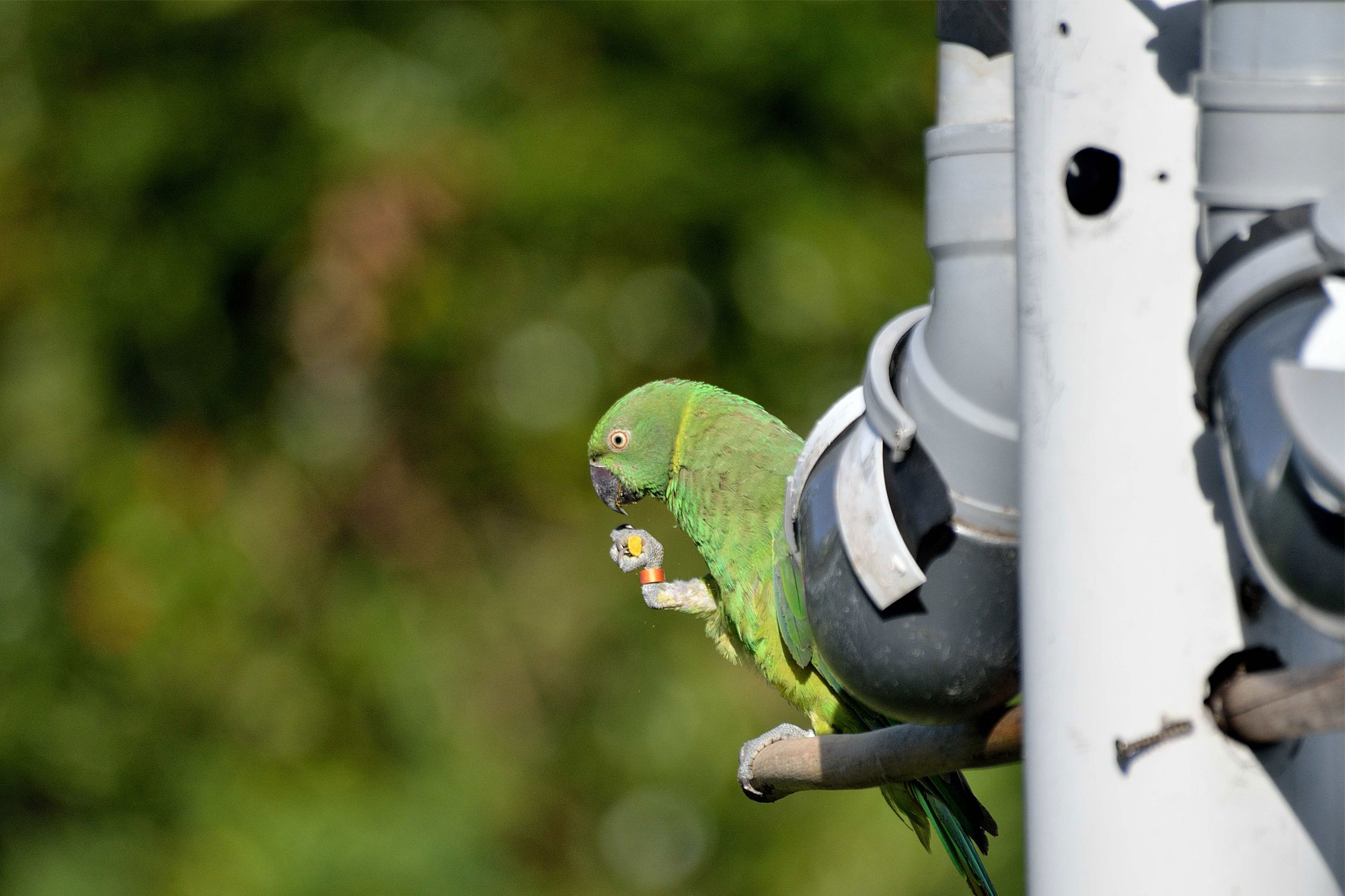New research carried out by DICE explores the value of measuring the effects when conservationists provide endangered species with supplementary food to help their populations recover.
Researchers from DICE and the North of England Zoological Society based at Chester Zoo used a case study of the endangered Mauritius parakeet which is prone to infection from the beak and feather disease virus (BFDV).
Supplemental food is often provided to threatened species in order to maintain or enhance reproductive fitness and thus population growth. However, its impact on individual reproductive fitness is rarely evaluated, despite being associated with both positive and negative consequences.
The study, led by Dr Simon Tollington and incorporating research from PhD candidate Debbie Fogell and Professor Jim Groombridge, used stable isotope analyses to characterise the relative proportional consumption of supplemental food and quantitative polymerase chain reaction to assess BFDV infection intensity among Mauritius parakeets. Life-history and nest-site data from a long-term monitoring effort was incorporated.
It found that reproductive fitness, measured by the number of fledglings produced per brood, was positively associated with proportional dietary content of supplemental food among adult parakeets, and breeding pairs that nested closer to feeding stations consumed more supplemental food than those nesting further away.
Dr Tollington said, “Our study demonstrates that supplementary feeding can lead to an overall increase in population growth. By characterising individual consumption, we reveal subtle patterns of use and differential benefits on reproductive fitness within a population. Manipulating the delivery of supplemental food may help to reduce demand on finite resources or target the proportion of a population that derives the most benefit. For example, the use of and access to feeding stations could potentially be targeted towards specific individuals, or positioned in the habitats most deficient in native food. However, there is an associated trade-offs in fecundity: increasing reproductive fitness in one component of the population may be accompanied by a decrease in another.
“It is hoped that this knowledge could be incorporated into adaptive management strategies that aim to fulfil specific objectives associated with species recovery and long-term viability.”
The study – Individual consumption of supplementary food as a predictor of reproductive performance and viral infection intensity – by Simon Tollington, John G. Ewen, Jason Newton, Rona A. R. McGill, Donal Smith, Aurélie Henshaw, Deborah J. Fogell, Vikash Tatayah, Andrew Greenwood, Carl G. Jones and Jim J. Groombridge is published in the Journal of Applied Ecology.

